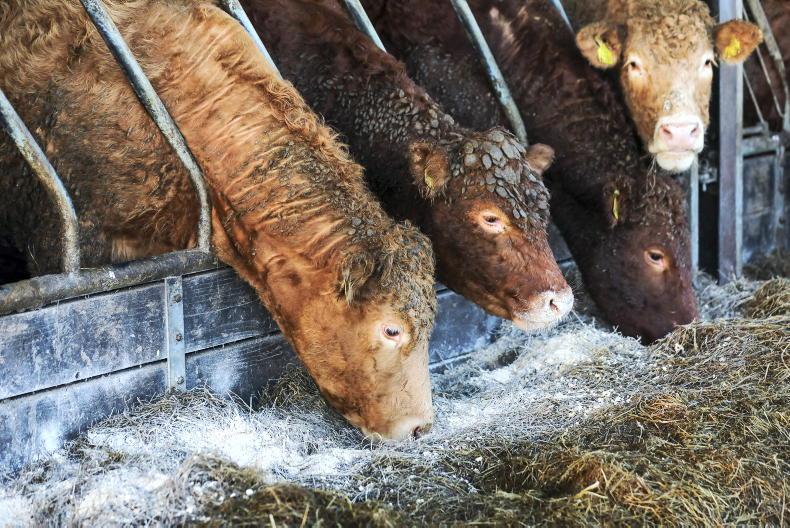There is reasonably strong evidence to suggest that beef finishers are passing down the supply chain the payments due to come to them via the new Beef Carbon Reduction Scheme (BCRS).
Looking at mart data from the first six weeks of 2024, steers over 500kg liveweight are averaging 281p/kg compared to 264p/kg over the final six weeks of 2023. On a 550kg animal, it is a difference of £93/head.
For good-quality R and U-grading types weighing 400kg to 500kg, the difference in prices being paid over the same period is closer to £150/head.
Of course some of this is driven by beef market sentiment and if we compare the average steer and heifer price paid by factories in mid-December to that in mid-February, returns have increased by over £60/head for a 380kg carcase.
But while these returns at slaughter are up, the prices being paid in marts have increased by significantly more.
Pressure
However, in the last couple of weeks there has been a bit of downward pressure on the local beef trade, as more winter finishers look to move cattle out of sheds.
At the same time, there have also been some reports of factory agents looking to buy cattle cheaper while reminding finishers about the increased rate of BCRS payment that applied in February (£40 per head) and again from 1 March (£60 per head).
The point being made is that while prices on offer might be down, any difference will be more than compensated by the higher BCRS rate.
Where that argument is made, it should be immediately knocked on the head by farmers. The BCRS is not a “slaughter premium” and has nothing to do with factory agents or with the price of beef. The funding for the scheme is coming from a cut to all farmer direct payments. It has been introduced to try to encourage farmers to slaughter cattle at younger ages, which ultimately will lower overall carbon emissions associated with NI beef.






 This is a subscriber-only article
This is a subscriber-only article











SHARING OPTIONS: